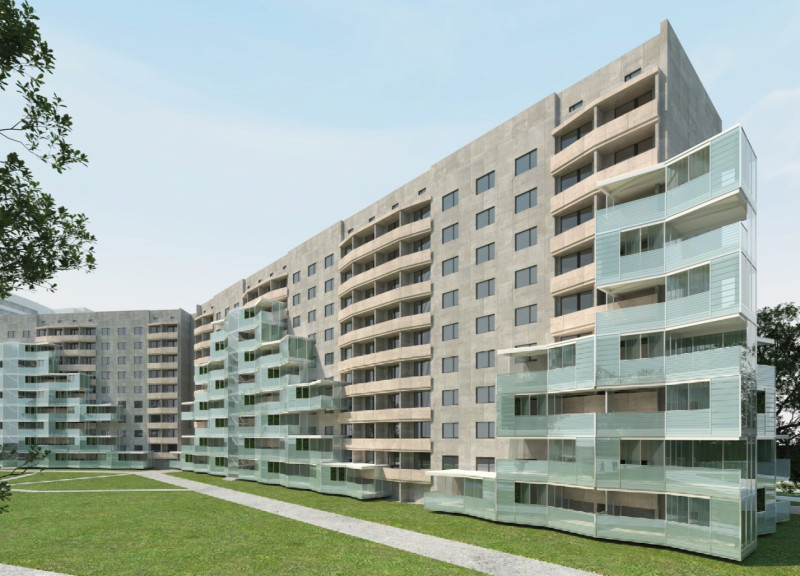5 key facts about this project
At the heart of the design is a multifunctional space that accommodates various activities. This versatility is evident in the strategic layout, which optimizes natural light and spatial flow. Large windows and open spaces create a sense of transparency and openness, inviting interaction between indoor and outdoor environments. The inclusion of communal areas promotes social engagement, fostering a sense of community among users. These elements not only fulfill the practical needs of the occupants but also contribute to a lively atmosphere that encourages collaboration and creativity.
Materials play a significant role in defining the project’s character. The use of natural materials such as wood, glass, and stone reflects an intention to harmonize the structure with its environment. The wooden elements provide warmth and a tactile quality, enhancing user comfort while promoting sustainability. Glass is utilized strategically to maximize daylight while minimizing the need for artificial lighting, which underscores the project’s commitment to energy efficiency. Stone contributes to the project’s durability and permanence, establishing a connection to the local landscape.
Unique design approaches are evident throughout the project, particularly in how the architecture responds to climatic conditions. The orientation of the building is meticulously considered, allowing passive heating and cooling strategies to be maximized. Overhangs and shading devices are integrated into the design to control heat gain during the warmer months while allowing sunlight to penetrate deeper into the space during winter, illustrating a practical understanding of the local climate dynamics.
Landscaping is another critical aspect that enhances the overall design. The integration of green spaces not only provides a visual buffer but also contributes to biodiversity and improves the microclimate around the structure. The project features native plant species that require minimal maintenance, aligning with sustainable practices and reducing water consumption. This landscaping approach creates an inviting environment that blurs the lines between built and natural spaces, enriching the user’s experience.
The architectural designs reflect a harmonious balance between form and function. The façade is thoughtfully articulated, showcasing an engaging rhythm that draws the eye and encourages exploration. Each element of the exterior is purposefully designed to evoke a sense of connection to place, while the interior spaces prioritize user welfare through ergonomic considerations and thoughtful detailing.
Innovative architectural ideas employed within the project include flexible interiors that can adapt to various uses over time, ensuring longevity and relevance. The incorporation of smart technology allows for enhanced user control over lighting and climate, aligning with contemporary trends in sustainable architecture. This forward-thinking approach not only meets current needs but anticipates future requirements.
In essence, this architecture project is a compelling example of how design can cater to community needs while respecting its environment. Its careful consideration of materiality, spatial dynamics, and user experience underscores its relevance in today’s architectural discourse. Readers interested in a thorough understanding of the project presentation are encouraged to explore the architectural plans, sections, and designs to appreciate the detailed thought processes behind these architectural ideas.


























